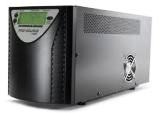Standards for wiring lighting networks
 In every home, be it a city apartment, a country house or even an outbuilding, there is a need for electricity supply. Due to the fact that electricity is obtained mainly from large power plants, certain standards are set for the voltage and frequency of the power grid.
In every home, be it a city apartment, a country house or even an outbuilding, there is a need for electricity supply. Due to the fact that electricity is obtained mainly from large power plants, certain standards are set for the voltage and frequency of the power grid.
So in our country such voltage standards are widespread as 220-240 V for single-phase and 380 V for three-phase circuits and a network frequency of 50 Hz. But all these are «ideal» indicators or, as you can call them, theoretical. In reality, there are quite large differences in voltages from standard specifications. And, of course, these deviations can negatively affect the operation of electrical devices. Consider the negative impact of voltage spikes on the most basic electrical equipment—the incandescent lamp that everyone is familiar with.So, at a voltage drop of 2.5%, the luminous flux of this lamp decreases by 9%, and at a voltage drop of 10%, which also happens often, the light output of the lamp will decrease by as much as 32%. If we consider the opposite case, that is, an increase in voltage above the standard by 5%, then the luminous flux of the lamp will undoubtedly increase, but at the same time its service life will be reduced to 2 times.
This example is indicative not only of such primitive electrical elements, but also of installations with a more complex structure. Let's assume that a solid-state TV (not plasma or liquid crystal) may not work at a voltage that differs from standard by more than 10%. In the event of an increase in voltage, some of its elements will simply fail. At low voltage, the situation is the opposite — the kinescope will not light up, that is, in simple words, instead of a TV, we will get a radio.
To avoid the occurrence of these problems, when performing electrical work, install rectifiers and voltage stabilizers. These devices can be installed both for a separate unit of household appliances (refrigerator, TV) and for all electrical equipment in the house.
Computers and other office equipment are more fortunate in this regard — UPS are produced for them — uninterruptible power supplies that, in addition to correcting and stabilizing the input voltage to the required values, can provide the device with electricity from batteries for a while during the absence of voltage on the web.
